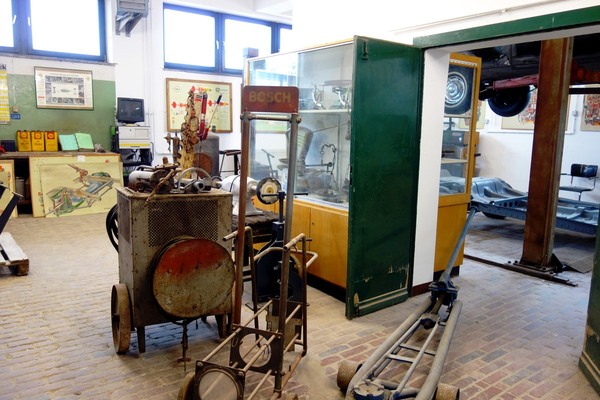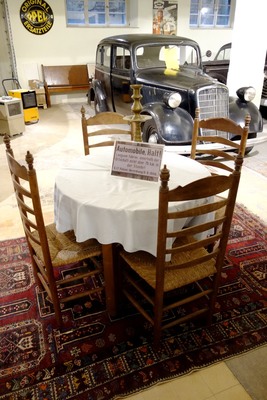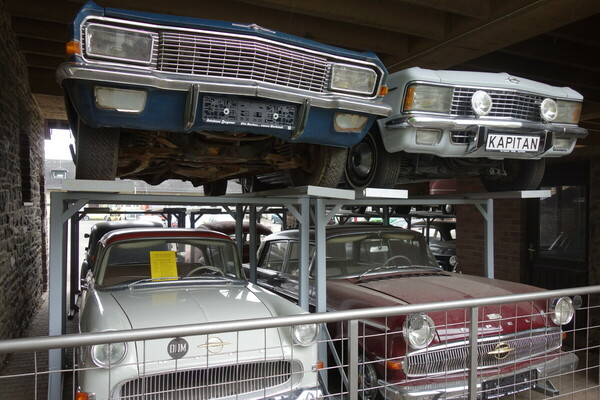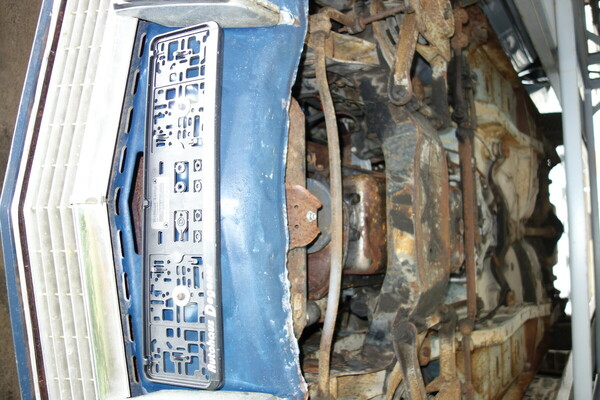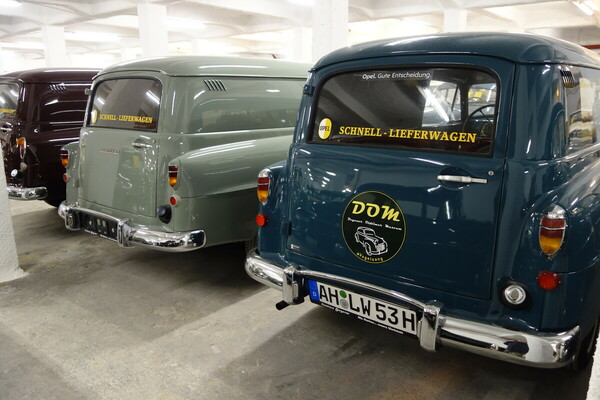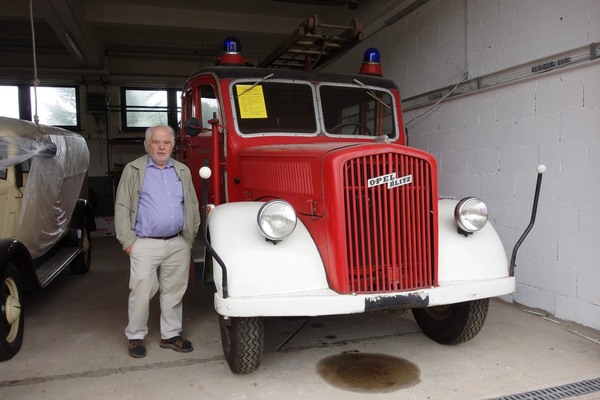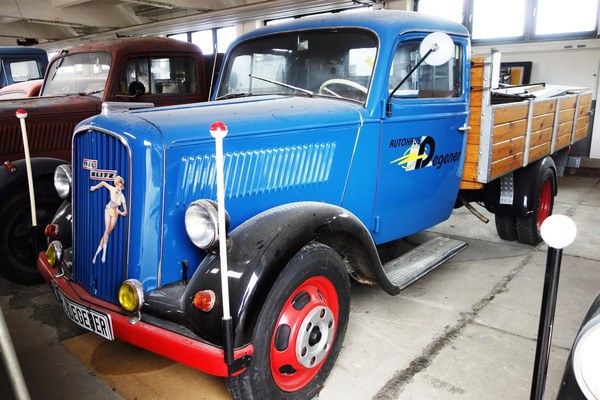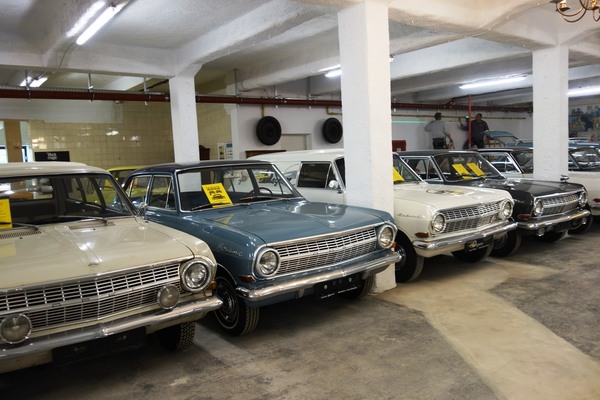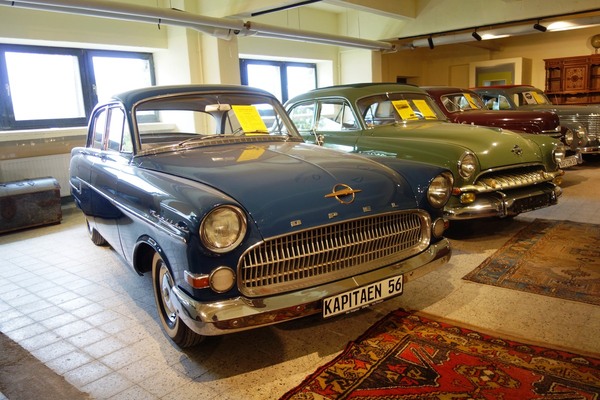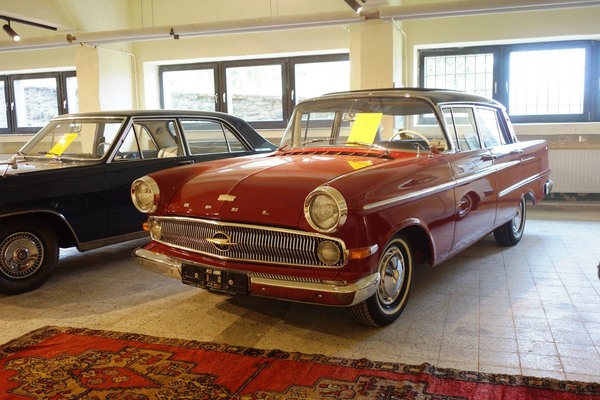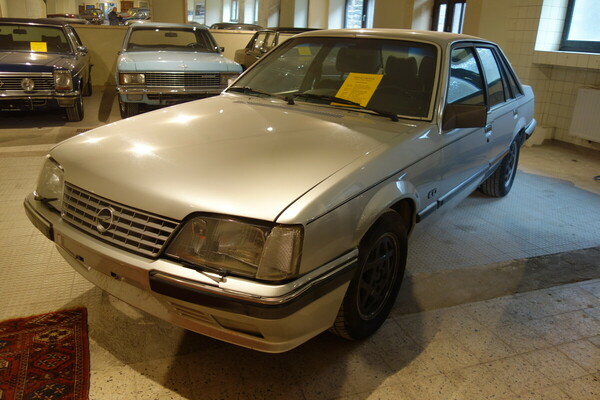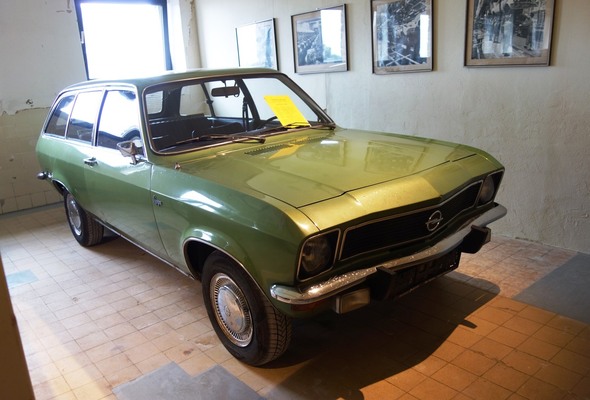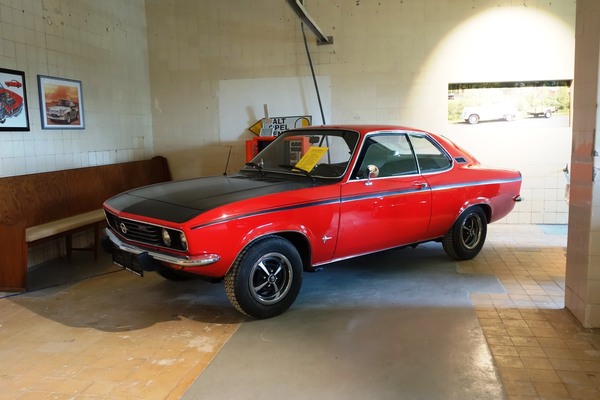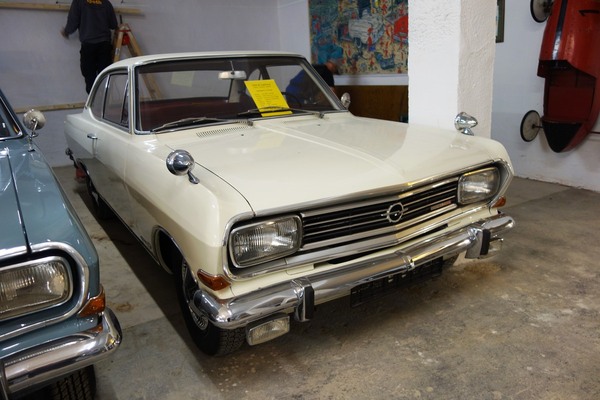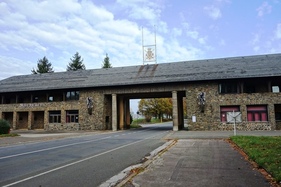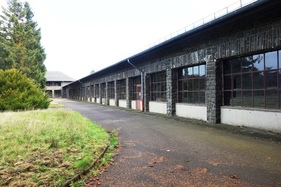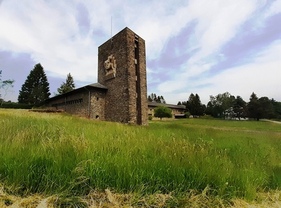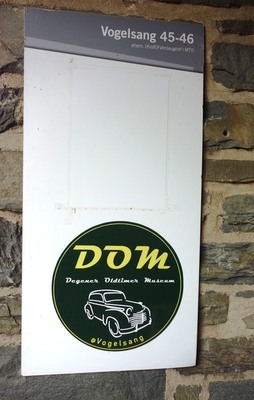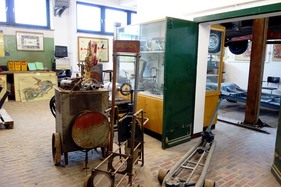The extensive collection of Opel vehicles from the brothers Martin and Josef Degener with a focus on vehicles from the 1950s to 1980s (see Zwischengas annual magazine 2018, p. 56 ff) has moved from Vreden in Münsterland to Vogelsang in the North Eifel region. You should allow plenty of time to visit the new museum in the Eifel National Park, as it is somewhat remote.
Hikers on the "Eifelsteig" long-distance hiking trail will inevitably pass by; those interested in history may have already come across the term "Forum Vogelsang IP", where "IP" stands for "Internationaler Platz". Behind it is an area of around 100 hectares above a lake with sweeping panoramic views. The location is steeped in history. Vogelsang Castle is one of three former so-called Nazi order castles, which are modeled on medieval castles. It was built by the National Socialists in 1934 in the solitude of the northern Eifel region to train future leaders in line with the Nazi line.

After the war, the site was first used as a British military training area and then as a Belgian military training area until 2005. In the following years, the buildings of the listed ensemble were gradually converted to modern use, in particular a visitor and exhibition center was built. After passing the barrier, drivers first reach the three-winged Malakoff building in front of the castle.
How the Degener family's journey began
In 2019, the Degener family acquired parts of this building in order to carefully renovate it and house their car collection in a "Degener Oldtimer Museum" (DOM). The entire DOM complex has a floor area of 34,000 square meters and consists of the vehicle yard (with a 2100 square meter inner courtyard), the Malakoff east wing with its upstanding buildings and a 100 meter long arcade, as well as a former chapel. In short, there is plenty of space here for the Degener brothers' Opel cars, and there is certainly no museum cramped conditions.

The reporter had the opportunity to visit the new museum on the occasion of the open day and was kindly given a guided tour of the DOM by Josef Degener. To anticipate the result: a visit to this Opel museum is highly recommended not only to friends of the brand with the lightning bolt. After passing a ticket booth, you enter the inner courtyard, where Josef Degener begins his tour. A number of vehicles in very different states of preservation are housed here. Later, it should be possible to go directly from the middle of the courtyard to the vehicles on display in the basement. But it's not that far yet. Construction is still underway in various parts of the museum. Conversion in line with monument protection regulations simply takes time.

There is a lot of history here
In the yard, the reporter sees a four-door Corsa A GL with a notchback. The car was only moderately successful in this country at the time, which is why it is very rare today. With a grin, Josef Degener explains that the rear of the notchback Corsa is styled after the Opel Senator. That's exactly right, you just have to come up with it! In another corner of the courtyard, an Opel Olympia and a GT stand side by side. It's hard to believe that not even 30 years separate these two very different cars.
In the adjoining halls, there is a phalanx of Opel Blitz commercial vehicles, mostly from the pre-war period. It is noticeable that most of the exhibits have signs in German. Soon every vehicle will be labeled in this way. The signs inform the visitor about the time of construction, the number of units, the engine, the cubic capacity, the maximum speed, the new vehicle price at the time and other special features of the vehicle. In addition to the "Blitzen", there is also another rarity, although it is not an Opel: a Gutbrod Standard three-wheeler with a single-cylinder two-stroke engine, as it was built from 1935 to 1939. The vehicle could be operated during the war without a tax or driving license.

Another hall houses a car workshop where you can inspect the underbody of a vehicle on a lifting platform. Or rather: you can see through it. The term "full of holes" would be an understatement. "It's so bad that it's no longer worth restoring," says Degener. A counterpart on the floor shows what the restored vehicle floor should look like instead. In another hall there are convertibles, almost all covered with film. In addition to an Ascona C convertible by Keinath, an Opel Speedster and a Rekord convertible by Deutsch can be seen under the wrapping.

We move on to the "driving school" section. The fact that the Degener family also ran a driving school in addition to the Opel dealership is documented with great attention to detail. In a recreated driving school room, a Rekord P1 can be seen as a driving school car; a large brake model hangs on the wall. This is followed by a highlight of the museum: the "Captain's Hall". Surrounded by oriental carpets, all the post-war Opel Kapitän models await visitors here: from the 1948 model year to the '58 "keyhole Kapitän" and the KAD series, as well as a Bitter SC Coupé. A '68 Diplomat with its invitingly open driver's door seems to be just waiting for someone to bring its V8 to life. It will soon be joined by one of the ultra-rare Diplomat coupés.

A corridor leads to another large hall dedicated to the mid-range Olympia and Rekord models. Here, too, you will find all the variants from the 1950s and 1960s. Special mention should be made of the "Schnell-Lieferwagen". These are delivery van versions of the Rekord Caravan, which were particularly popular in Scandinavia. Remarkable is an example that had a rear bench seat despite the lack of rear side glazing. The range of the Opel Rekord P1 is also fully illustrated in the DOM. While the luxury edition of the Rekord, the Rekord Ascona, built exclusively for Switzerland by GM Suisse in Biel, marks the upper end of the scale, the extremely meagre economy model Olympia without any chrome ornamentation can be found at the lower end. It wasn't even allowed to be called a "Rekord" back then. In view of the opulence in vogue at the time, this model could not have been a success, so it was quickly replaced by the Opel 1200, which can be recognized by its slightly curved chrome trim on the side and was intended to bridge the gap until the Kadett A appeared.

The museum also houses a "pre-war hall". Here, a stately dark blue Admiral from 1939 with a six-cylinder engine and 3.6-liter displacement immediately catches the eye. Josef Degener comments: "They were requisitioned by the military for the generals and then simply remained in Russia. But they were still used there. This one comes from Lithuania and was traded in after the collapse of the Soviet Union." An Opel P4 and an Opel 6 are also on display. Surprisingly, there are two vehicles from other manufacturers in this room: a Ford T from 1918 and a DKW F8.
It will be interesting to see
At the end of the tour, there is one more surprise: the Kadett Church, sorry, the "Malakoff Chapel". This sacred building has been formally deconsecrated and can now be used for secular purposes. Meetings and events can take place here in future. This room is also furnished with carpets. There are nine examples of the Kadett A, including a beautiful coupé with red and black paintwork. This combination was very popular at the time, which can still be seen today. However, one wonders why the Kadett of all cars found a home here. The answer is simple. As the doors of the chapel could not be widened for reasons of monument protection, only a narrow model could fit through - and that was the Kadett A.

At the time of our visit to the museum, around 150 cars were on display. "But more vehicles will be added, especially from the newer model years," assures Josef Degener. We can look forward to that. Even if the DOM isn't quite finished yet, the cathedral in Cologne isn't really. But there is no doubt that the Degeners' Opel museum, which is well worth seeing, is significant in terms of automotive history.

As mentioned at the beginning, Vogelsang is not a place you can just drive to; the location is too decentralized for that. You should therefore take your time and perhaps combine a visit to the DOM with a relaxing Eifel hike and, last but not least, an exploration of the historically important Vogelsang IP as a day trip.








